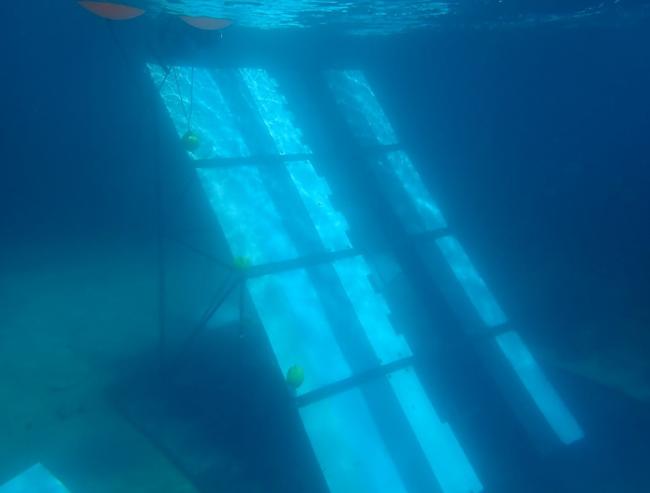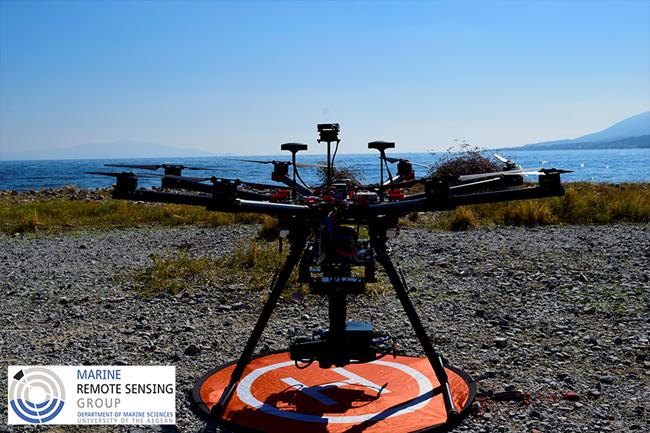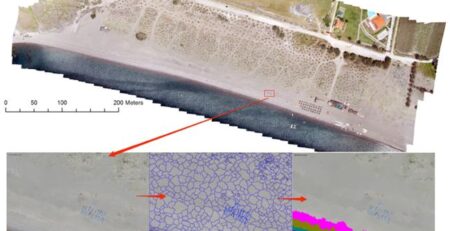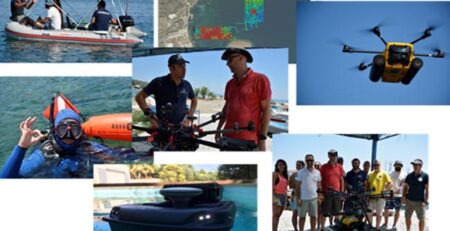SPOTS Experiment
Summary
The SPOTS project will take a closer look at the influence of biofouling and water depth on the spectral reflectance of plastics. By varying the water depth and degree of biofouling systematically and in a controlled lab and outdoor environment, we will gather a more detailed dataset and predictive model about the influence of both these factors on the hyperspectral footprint of plastic litter. Besides debris from the marine environment, we will also investigate coastal and riverine plastic litter.
Introduction
Recent studies have shown that remote sensing of floating marine plastic litter (MPL) is feasible from unmanned aerial systems, aircraft, and satellite missions. However, in the infrared (IR) spectrum, water is a strong light absorber, which makes the spectral detection and discrimination of plastics a great challenge. Additionally, MPL is often covered with living organisms, and it is unclear what impact different thicknesses of biofouling may have on the spectral reflectance of floating plastic. This project aimed to explore further the relationship between depth of submersion, biofouling layer thickness, and the magnitude/shape of plastic’s inherent spectral reflectance.
The findings of the proposed experiment will be assimilated into radiative transfer models to advance scientific knowledge relevant to the remote sensing of MPL. The findings will also help in understanding how the presence of floating and suspended plastics in the water column may affect primary production as plastics interact with light propagated into the ocean. Furthermore, knowledge about oceanic IR absorption at different submergence depths on the spectral reflectance of MPL would be key to developing tools to estimate MPL depth and windage. The capacity to measure the submergence depth of MPL will be extremely useful for field observations because it is expected to influence long-term accumulation (e.g., low windage debris with large submergence depth will more likely be captured in subtropical accumulation zones).
Objectives
- To establish a spectral reflectance library (280 nm – 2500 nm) of submerged and bio-fouled virgin and marine-harvested plastic litter samples. We also aim to create a library based on the Spectral Response Functions of imaging technologies utilized on drones and satellite missions.
- Collect measurements using off-the-shelf multispectral sensors (Slantrange, Sentera) for comparison with hyperspectral observations. Anisotropic properties of the spectral reflectance will be evaluated
- To develop an optical predictive model that explains the attenuation of light related to plastic litter based on multispectral or hyperspectral observations from the University of the Aegean.
- To identify diagnostic spectral reflectance features of submerged plastics in the visible to near-infrared spectrum.
- To produce an updated standard operating protocol for high-quality observations of floating and submerged ocean plastics using Unmanned Aerial Systems (UAS).
Funding
The project is funded by the Discovery Element of the Basic Activities of ESA, the European Space Agency.
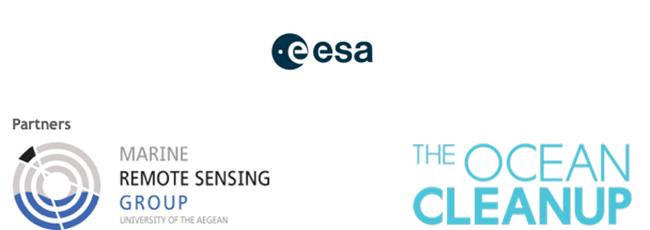
State of the art/background
In recent years, the possibility of remote sensing of floating and slightly submerged ocean plastic has been demonstrated through various scientific evidence-based investigations using hyperspectral (Garaba et al., 2018), multispectral (Topouzelis et al., 2019), and fine geospatial resolution optical imagery (Acuña-Ruz et al., 2018; Kako et al., 2018; Lebreton et al., 2018). Operational monitoring strategies for marine plastic debris have been challenging owing to the inherent complexity and diversity of MPL (Andrady, 2011; Chubarenko et al., 2016; Filella, 2015; Rezania et al., 2018).
The degree of biofouling and the water depth or level of submersion are two significant factors that contribute to the detectability of MPL using remote sensing. Literature reports contain limited information that explains the optical properties of plastics concerning varying levels of submersion and bio-fouling. It has been documented that as the large (macro-, > 5 mm diameter) plastics are weathered at sea or on land, they break down into smaller sized (micro-, < 5 mm diameter) plastics more capable of absorbing chemicals, denser, and with a larger surface area for microbial accumulation (Bergmann et al., 2015; Chubarenko et al., 2016; Filella, 2015). Therefore, the changes in the chemical and physical properties of the plastics affect the optical characteristics of these plastics. Furthermore, it is known that water is a strong absorber of light in the shortwave infrared (SWIR, > 1000 nm), which complicates the detection of plastics at these spectral bands. Plastics have diagnostic absorption features in the shortwave infrared, and therefore, a better understanding of how submerged or bio-fouled plastics optically vary is crucial (Garaba & Dierssen, 2018; Goddijn-Murphy & Dufaur, 2018).
For these reasons, we propose to explore the relationship between the depth of submersion, biofouling layer, and the spectral reflectance of virgin and marine-harvested plastics. The specimens to be sampled will consist of different polymer types, size dimensions, and apparent colors. Net trawl surveys have shown that floating MPLs are commonly found in the top 5 m layer of the ocean (Kooi et al., 2016; Law et al., 2014; Lebreton et al., 2018). Therefore, we will investigate the optical changes in the top layer of the ocean by tank experiments covering 0 – 1 m depth and complementary field experiments covering 0 – 5 m depth. Additional activities will include evaluating the anisotropic characteristics of the spectral reflectance of the submerged plastics.

